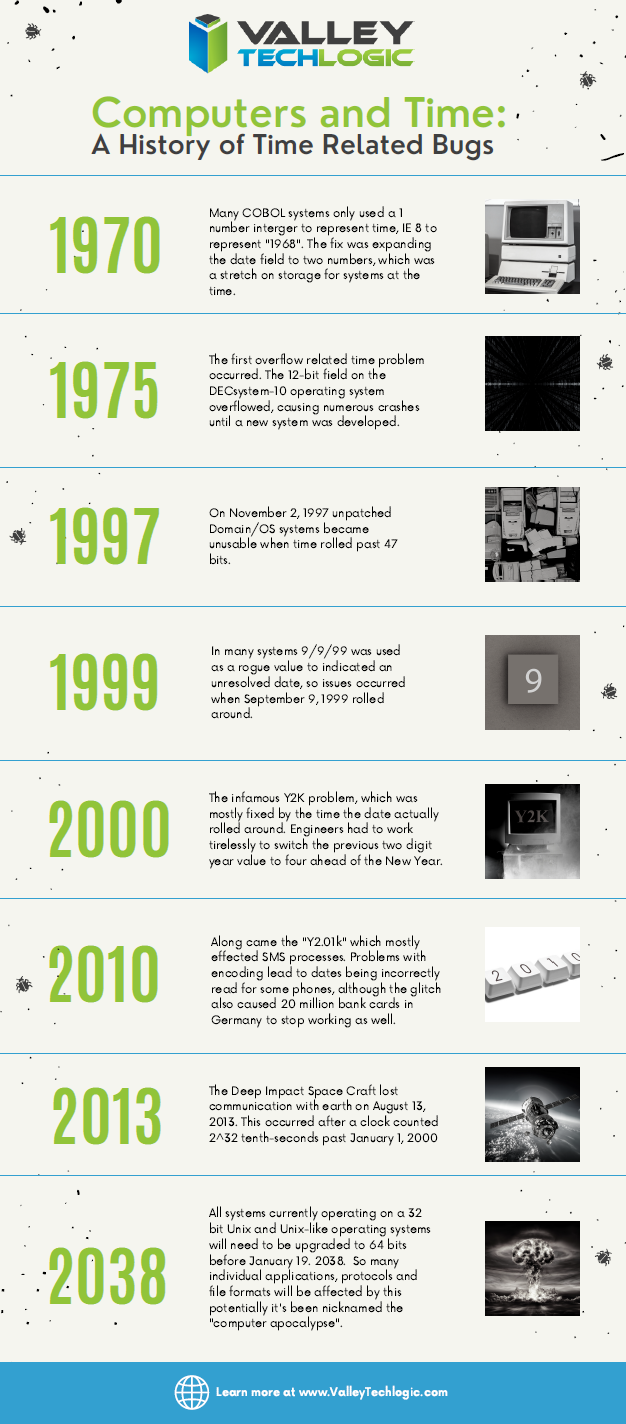We hope everyone had a wonderful New Year but unfortunately for those with 2016/2019 Exchange servers, the turning of the clocks to 01/01/2022 led to an unpleasant bug.
Computer bugs related to a New Years event aren’t uncommon, we created this infographic about other times this has happened (as well as a notable future one).
The error this time was caused by the date checking within the anti-malware portion of Exchange. The date check failure caused the anti-malware system to crash which led to messages being stuck in a queue, with many IT professionals noticing it happening right at midnight on New Year’s Eve.
Exchange administrators online started noticing error messages with their exchange servers as soon as the new year hit, such as “The FIP-FS Scan Process failed initialization. Error: 0x8004005. Error Details: Unspecified Error” or “Error Code: 0x80004005. Error Description: Can’t convert “2201010001” to long.”
Microsoft rolled out an update to Exchange servers labeled “220101001” on New Year’s Eve that appears to have begun the issues, and update “220101002” also was plagued with the same problems.
Disabling malware filtering acted as a stop gap fix for some, though Microsoft has now released a script to fix the issue. They’re warning users however that the fix will “take some time”. The script must be run on each 2016/2019 Exchange server and is reportedly taking up to 30 minutes to run.
There’s also a manual fix for users who choose to go that route, although this may not shorten the execution time. It will also take some time for the messages that were stuck to finally clear the queue. Some users are reporting the script didn’t work to solve the problem initially but running it multiple times finally lead to a solution.
So, what’s the easy explanation as to why these bugs arise in the first place? The most famous example of a time related bug occurring is of course Y2K, but as in our chart these bugs have been occurring since nearly the time a computer first existed (all the way back to 1975).
The cause is due to how computers calculate and format time. When computer programs first started being developed, engineers entered time as two-digit number such as “70” for 1970 to save on storage space (which was incredibly expensive at the time). As the year 2000 approached the fear was computers would interpret “00” as “1900” instead of “2000”. This would lead to a host of problems for software that needs an accurate date for its calculations – such as banks or travel institutions.
Engineers raced to solve the problem and, in the end, not many issues occurred with the Y2K bug. As we see now with the Y2K22 bug however, the problems with computers and their calculation of time are an ongoing process. They’re not always specifically tied to a New Year’s event either, on September 9th, 2001, the number of seconds past the Unix Epoch date of 01/01/1970 passed 1 billion, causing many of those programs to fail.
Time is a complex topic as we all know, and even more so for computers and other devices that need extremely accurate time calculation to run properly. If the complexity of this bug or any other device related issues is making your head spin, why not leave it to the experts? Schedule a call with Valley Techlogic today to learn how we can save you time and frustration when dealing with your businesses IT this year and beyond.
Looking for more to read? We suggest these other articles from our site.
-
LastPass say they didn’t leak your password, however some users still received alarming alerts
-
What’s the difference between a regular data backup and an archival backup?
-
Tech Scalpers and How to Get What You’re Looking For
-
Does doing your own IT as a business owner really make sense? We did the math.
This article was powered by Valley TechLogic, IT service provider in Atwater, CA. You can find more information at https://www.valleytechlogic.com/ or on Facebook at https://www.facebook.com/valleytechlogic/ . Follow us on Twitter at https://twitter.com/valleytechlogic.




You must be logged in to post a comment.